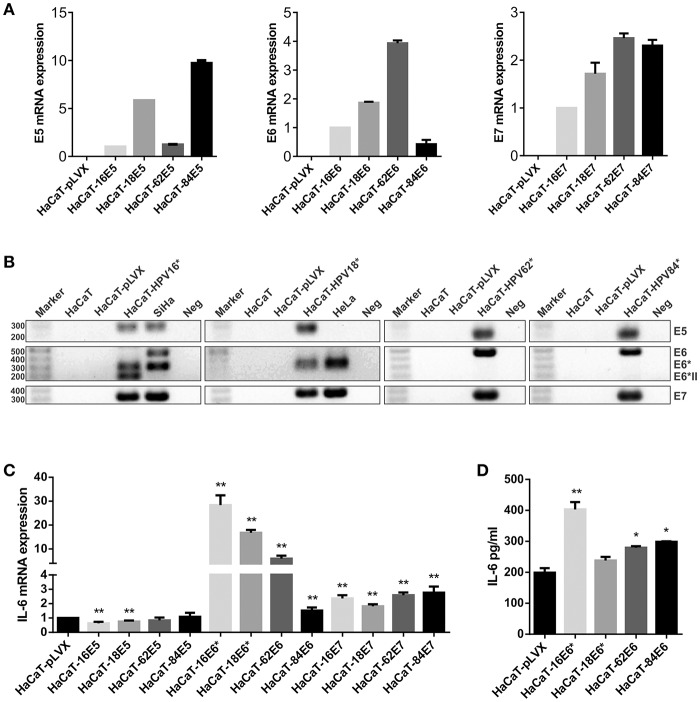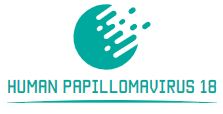The HPV (HumanPapillomavirus) E5 gene encodes a small and extremely hydrophobic oncoprotein that impacts immune evasion, cell proliferation, lack of apoptotic capability and angiogenesis in tumors.
E5 exhibits affinity for organic membranes and was related to a rise of EFG/EGFR (Epidermal Growth Factor/ Epidermal Growth Factor Receptor) signaling by accumulation of EGFR in mobile membranes.
Due to the frequent integration of the HPV genome into the host cell genome, E5 is continuously not transcribed in cervical tumors.In this work we appeared ahead to verifying whether or not the potential expression of E5 protein in HPV16+ (HumanPapillomavirus 16 optimistic) and HPV18+ (HumanPapillomavirus18 optimistic) cervical tumors was related to ranges of EGFR and VEGFA (Vascular Endothelial Growth Factor-A) transcription and with sufferers total survival.
Association between the presence of E5 transcripts and viral genome disruption was noticed for HPV16+ and HPV18+ tumors. Association was not noticed between tumors probably able to translating E5 and EGFR or VEGFA transcriptional ranges.
Similarly, the aptitude of translating E5 and total survival in sufferers with HPV16+ squamous cell carcinoma tumors stage ≥ IB2 weren’t related.The seemingly presence of E5 transcripts was neither related to the next exercise of the EGFR-VEGFA pathway nor to the general survival of sufferers with HPV16+ squamous cell carcinoma in levels ≥ IB2. This article is protected by copyright. All rights reserved.

Immunogenicity of two and 3 Doses of the Quadrivalent Human Papillomavirus Vaccine as much as 120 Months Postvaccination: Follow-up of a Randomized Clinical Trial
Several international locations have carried out a 2-dose (2D) humanpapillomavirus (HPV) vaccination schedule for adolescents based mostly on immunobridging research. We in contrast immunogenicity of 2D vs 3-dose (3D) schedules of the quadrivalent vaccine (4vHPV) as much as 10 years after the primary dose.Girls aged 9-13 years had been randomized to obtain 2D or 3D and had been in contrast with ladies aged 16-26 receiving 3D at day 1 and months 7, 24, and 120 after the primary dose.
Antibody ranges for HPV6/11/16/18 had been evaluated utilizing the aggressive Luminex immunoassay (cLIA) and complete immunoglobulin G assay. Geometric imply titers (GMTs) and seropositivity charges had been in contrast between the completely different teams at completely different time factors. Noninferiority of GMT ratios was outlined because the decrease sure of the 2-sided 95% confidence interval (CI) being higher than 0.5. Kinetics of antibody titers over time amongst research teams had been examined.
At 120 months, knowledge from 35 2D ladies, 38 3D ladies, and 30 3D ladies had been used for analyses. cLIA seropositivity charges had been above 95% for all HPV vaccine varieties and all schedules, besides HPV18, with the bottom seropositivity noticed amongst 3D ladies (60.0%; 95% CI, 40.6%-77.3%).
GMT ratios (cLIA) for each 2D and 3D ladies had been noninferior to three doses in ladies for HPV6/11/16/18. Trends had been comparable between assays.GMTs for HPV6/11/16/18 after 2D or 3D of 4vHPV in ladies had been noninferior to 3D in grownup ladies as much as 120 months postvaccination. This research demonstrates long-term immunogenicity of the 2D HPV vaccine schedule.
The Japanese authorities started humanpapillomavirus (HPV) vaccination program for women aged 12-16 years in 2010 however withdrew its advice in 2013 due to potential opposed results, resulting in drastically lowered vaccination uptake.
To consider population-level results of HPV vaccination, ladies aged <40 years newly recognized with cervical intraepithelial neoplasia grade 1-3 (CIN1-3), adenocarcinoma in situ (AIS) or invasive cervical most cancers (ICC) have been registered at 21 taking part institutes every year since 2012.
A complete of 7709 ladies had been registered throughout 2012-2017, of which 5045 had been HPV-genotyped. Declining traits in prevalence of vaccine varieties HPV16 and HPV18 throughout a 6-year interval had been noticed in CIN1 (50.0% to 0.0%, Pdevelopment <0.0001) and CIN2-3/AIS (83.3% to 45.0%, Pdevelopment =0.07) solely amongst ladies aged <25 years. Overall, HPV vaccination lowered the proportion of HPV16/18-attributable CIN2-3/AIS from 47.7% to 33.0% (P=0.003): from 43.5% to 12.5% as routine vaccination (P=0.08) and from 47.8% to 36.7% as catch-up vaccination (P=0.04). HPV16/18 prevalence in CIN2-3/AIS instances was considerably lowered amongst females that obtained first vaccination at age ≤20 years (P=0.02).
We couldn’t consider vaccination results on ICC owing to low incidence of ICC amongst ladies aged <25 years. We discovered HPV vaccination to be efficient in defending towards HPV16/18-positive CIN/AIS in Japan; nevertheless, our knowledge didn’t help catch-up vaccination for ladies aged >20 years.
Older adolescents who skipped routine vaccination owing to the federal government’s suspension of advice could profit from receiving catch-up vaccination earlier than age 20 years.
Genetic range and phylogenetic evaluation of HPV 16 & 18 variants remoted from cervical specimens of ladies in Saudi Arabia
Humanpapillomavirus (HPV) are well-known to be related to the event of cervical most cancers. HPV16 and HPV 18 are generally known as high-risk varieties and reported to be predominantly related to cervical most cancers.
The prevalence and genetic range of HPV have been effectively documented globally however, in the Kingdom of Saudi Arabia, knowledge on HPV genetic range are missing. In this research, we have now analyzed the genetic range of each HPV16 and HPV18 based mostly on their L1 gene sequence as a result of L1 gene is a serious capsid protein gene and has been utilized to develop a prophylactic vaccine.
In January 2011-2012, a complete of forty samples from cervical specimens of ladies in Saudi Arabia had been collected. The affiliation of HPV16, HPV18 was detected by polymerase chain response, sequenced and submitted to GenBank. The sequences identification matrix and the phylogenetic relationship had been analyzed with chosen HPVs. The highest sequence identification (99.5%) for HPV16 and (99.3%) for HPV was noticed with chosen HPVs.
The phylogenetic evaluation outcomes confirmed that HPVs from Saudi Arabia shaped a closed cluster with African, Asian, East Asian in addition to American HPVs distributed into a number of linages from numerous geographical areas.
The outcomes supplied the dear details about genetic range, however there may be an pressing have to generate full genome sequence data which can present a clearer image of the genetic range and evolution of HPVs in Saudi Arabia. In conclusion, the generated knowledge might be extremely helpful for growing molecular diagnostic instruments, analyzing and correlating the epidemiological knowledge to find out the chance of cervical most cancers and lastly to develop a vaccine for Saudi Arabian inhabitants.
